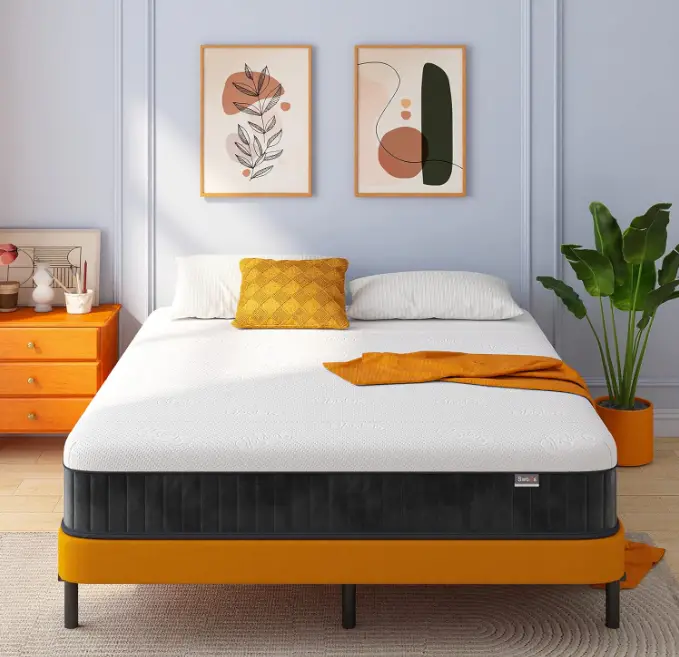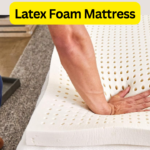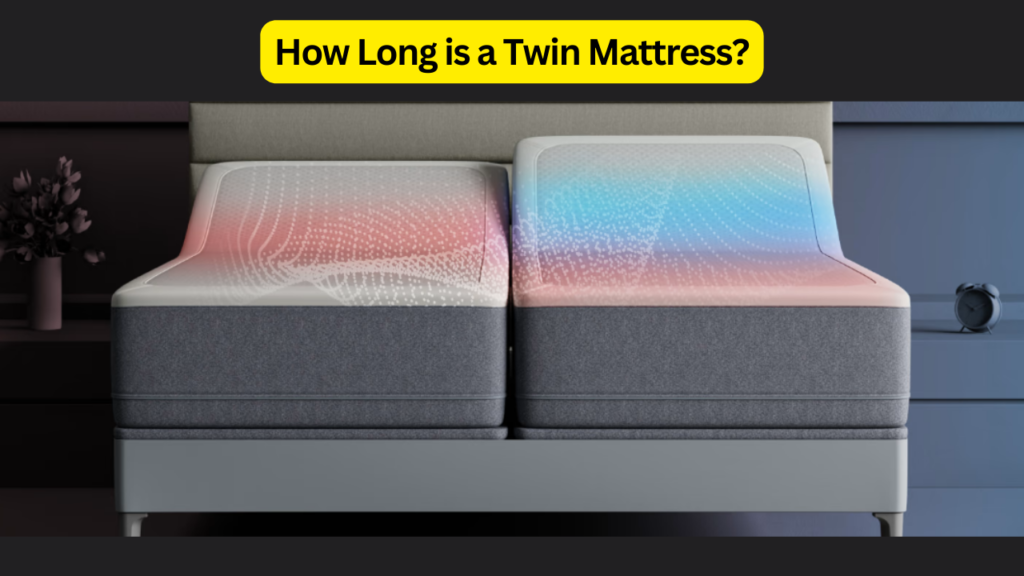Sleep is a crucial part of our daily routine, yet it often gets overlooked. One of the most significant factors influencing sleep quality is the type of mattress you use. In recent years, memory foam mattresses have surged in popularity, promising unparalleled comfort and support. This comprehensive guide will explore everything you need to know about memory foam mattresses, helping you make an informed decision for better sleep.
What is Memory Foam?
Memory foam, also known as viscoelastic foam, is a type of polyurethane foam that was originally developed by NASA in the 1960s to enhance the safety of aircraft cushions. Its unique properties allow it to mold to the body’s shape in response to heat and pressure, providing a customized sleeping experience.
Evolution of Memory Foam Mattresses
From its inception in aerospace technology, memory foam has evolved into a widely used material in the mattress industry. The first memory foam mattresses were introduced in the 1990s and quickly gained popularity for their ability to relieve pressure points and improve sleep quality. Today, advancements in foam technology have led to a variety of memory foam mattresses that cater to different sleeping needs and preferences.
Full Size Memory Foam Mattress
Types of Memory Foam
Memory foam mattresses come in several types, each offering distinct benefits:
- Traditional Memory Foam: Known for its deep contouring and pressure relief.
- Gel-Infused Memory Foam: Incorporates gel particles to help dissipate heat and keep the mattress cool.
- Plant-Based Memory Foam: Uses natural ingredients to reduce chemical content and environmental impact.
- Open-Cell Memory Foam: Designed to improve airflow and breathability.
Popularity and Market Trends
Memory foam mattresses have become a staple in the bedding market. Their popularity is driven by the increasing consumer demand for mattresses that provide both comfort and support. Innovations in foam technology and the rise of online mattress retailers have made memory foam mattresses more accessible and affordable than ever.
How Memory Foam Mattresses Work
Material Composition
Memory foam is made from polyurethane combined with various chemicals that increase its viscosity and density. This composition allows the foam to respond to body heat and pressure, creating a mold around the sleeper’s body.
Heat Sensitivity and Pressure Relief
One of the key features of memory foam is its heat sensitivity. When you lie down on a memory foam mattress, your body heat softens the foam, allowing it to conform to your shape. This conforming action helps distribute body weight evenly and alleviates pressure points, which can reduce tossing and turning during the night.
Adapting to Body Shape
Memory foam’s ability to adapt to the body’s contours provides personalized support. It fills in gaps and supports the natural curvature of the spine, promoting proper alignment and reducing the risk of back pain.
Durability and Longevity
Memory foam mattresses are known for their durability. High-quality memory foam can maintain its shape and support for many years, making it a worthwhile investment for long-term comfort.
Benefits of Memory Foam Mattresses
Superior Comfort
The primary advantage of memory foam mattresses is the superior comfort they offer. The foam’s ability to conform to the body provides a cradling effect that many find extremely comfortable.
Pain Relief and Spinal Alignment
Memory foam is especially beneficial for those suffering from chronic pain or spinal issues. By contouring to the body and providing support where it’s needed most, memory foam mattresses can help alleviate pain and improve spinal alignment.
Motion Isolation
One of the standout features of memory foam mattresses is their motion isolation capabilities. The foam absorbs movement, preventing it from transferring across the bed. This is particularly advantageous for couples, as it minimizes disturbances caused by a partner’s movements during the night.
Hypoallergenic Properties
Memory foam mattresses are inherently resistant to dust mites and allergens. The dense structure of the foam makes it difficult for allergens to penetrate, creating a healthier sleeping environment.
Customizable Firmness Levels
Memory foam mattresses are available in a range of firmness levels, from soft to firm. This variety allows you to choose a mattress that suits your personal comfort preferences and sleeping style.
Choosing the Right Memory Foam Mattress
Firmness Levels Explained
Memory foam mattresses come in various firmness levels. Understanding these levels can help you choose the right mattress for your needs:
- Soft: Ideal for side sleepers who need extra cushioning for their shoulders and hips.
- Medium: A versatile option suitable for a variety of sleeping positions.
- Firm: Best for back and stomach sleepers who require more support.
Thickness and Density Considerations
The thickness and density of a memory foam mattress affect its comfort and support. Thicker mattresses provide more cushioning, while higher-density foams offer greater durability and support. A typical memory foam mattress ranges from 8 to 14 inches in thickness.
Certifications and Safety Standards
When choosing a memory foam mattress, look for certifications such as CertiPUR-US, which ensures the foam is made without harmful chemicals and meets rigorous safety standards.
Budgeting for a Memory Foam Mattress
Memory foam mattresses come in a wide range of prices. Setting a budget before you start shopping can help narrow down your options and ensure you find a mattress that meets your needs without breaking the bank.
Comparing Brands and Models
Researching and comparing different brands and models is crucial to finding the best memory foam mattress. Consider factors such as customer reviews, warranty policies, and return options when making your decision.
Maintenance and Care for Memory Foam Mattresses
Cleaning and Deodorizing
Regular cleaning is essential to maintain the freshness of your memory foam mattress. Use a vacuum to remove dust and debris, and spot-clean any stains with a mild detergent. Allow the mattress to air out periodically to prevent odors.
Protecting Your Mattress
Using a mattress protector can shield your memory foam mattress from spills, stains, and allergens. Choose a breathable protector to ensure it doesn’t affect the mattress’s cooling properties.
Understanding Warranty and Return Policies
Memory foam mattresses often come with extensive warranties, covering defects in materials and workmanship. Familiarize yourself with the warranty terms and return policies before purchasing to ensure you’re fully protected.
Common Myths About Memory Foam Mattresses
Heat Retention Issues
While traditional memory foam is known for retaining heat, modern advancements such as gel-infused and open-cell foams have significantly improved temperature regulation. Most memory foam mattresses now offer cooling features to keep you comfortable throughout the night.
Off-gassing Concerns
Off-gassing refers to the release of volatile organic compounds (VOCs) when a new mattress is unboxed. While some memory foam mattresses may have a slight odor initially, it typically dissipates within a few days. Choosing a mattress with CertiPUR-US certification can minimize off-gassing concerns.
Suitability for All Sleepers
Contrary to some beliefs, memory foam mattresses can accommodate a variety of sleeping positions and body types. Whether you’re a side, back, or stomach sleeper, there’s likely a memory foam mattress that will suit your needs.
FAQs
How long do memory foam mattresses last?
Memory foam mattresses can last between 7 and 10 years, depending on the quality of the foam and how well you care for it.
Are memory foam mattresses good for back pain?
Yes, memory foam mattresses are excellent for back pain as they provide support and alignment for the spine.
Do memory foam mattresses need a box spring?
No, memory foam mattresses do not require a box spring. They can be placed on a solid foundation or platform bed.
Can you flip a memory foam mattress?
Most memory foam mattresses are designed to be one-sided and should not be flipped. However, rotating the mattress every few months can help maintain its shape and longevity.
How do I reduce the odor of a new memory foam mattress?
To reduce the odor, allow the mattress to air out in a well-ventilated room for a few days. Using a mattress protector and washing your bedding regularly can also help.
Is memory foam safe?
Yes, memory foam is safe. Look for mattresses with CertiPUR-US certification to ensure they are free from harmful chemicals.
Conclusion
Memory foam mattresses offer a combination of comfort, support, and durability that is hard to beat. By understanding the different types of memory foam, how they work, and the benefits they provide, you can make an informed decision that enhances your sleep quality. Whether you’re looking for relief from chronic pain, better motion isolation, or a hypoallergenic sleeping environment, a memory foam mattress might be the perfect solution. Take your time to research and compare options, and enjoy the restful sleep that comes with choosing the right mattress.








Pingback: Novilla Queen Size Mattress: A Comprehensive Review - SmartModest
Pingback: The Ultimate Guide to Pillows: Your Key to Restful Sleep - SmartModest
Pingback: Twin Air Mattress: The Ultimate Guide for Comfort and Convenience - SmartModest
Pingback: The Ultimate Guide to Choosing the Best Twin Size Air Mattress - SmartModest
Pingback: How Long Does a Mattress Last - SmartModest
Pingback: Can You Put Mattress on Mattress? - SmartModest
Pingback: OUUI 12 Inch Hybrid Mattress Review: Comfort, Breathability, and CertiPUR-US Certified Quality - SmartModest
Pingback: LINENSPA Adjustable Bed Base Review - SmartModest